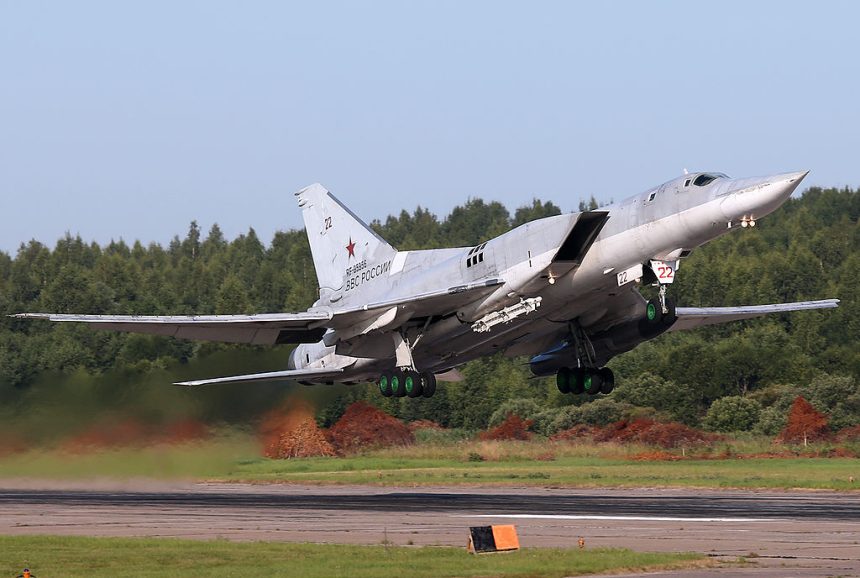Russian Air Force Tu-22M3 strategic bombers forward deployed to Iran have launched their first air strike on Daesh in Syria: old-fashioned carpet bombing.
Russian Air Force Tu-22M3 strategic bombers have been involved in the air strikes in Syria since Moscow has started pounding Islamic State militants last year.
The aircraft have carried out carpet bombings dropping OFAB-250-270 and FAB-500M-62 iron bombs on their targets.
Operating from Engels and Modzok airbases in southwestern Russia, the aircraft had to cover a distance close to 3,000 km. According to some sources, the aircraft were thus supported by several Il-78M aerial refuelers on their way to the targets and back: actually, it’s not clear whether the Backfire could be refueled since the retractable probe in the upper part of the nose was reportedly removed as a result of the SALT negotiations, but it can be reinstated if needed.
On Aug. 15, the first images of a contingent of 6 Tu-22M3 bombers forward deployed to Hamedan Air Base in western Iran, along with supporting Il-76 airlifters, emerged.
Russia deploys jets at Iranian Airbase to combat insurgents in Syria (Pictures) https://t.co/xY7BJZk34h pic.twitter.com/aSV6lwesb2
— Al-Masdar News (@TheArabSource) August 15, 2016
On Aug. 16, the Russian MoD confirmed that the Backfire aircraft deployed to Iran performed an air strike around the besieged city of Deir-ez-Zor in eastern Syria.
Rus aircraft made strike on militants’ objects in #SYRIA taking off from #Hamedan base(Iran) https://t.co/jPdwuY1NAGhttps://t.co/QocYEcztaj
— Минобороны России (@mod_russia) August 16, 2016
Based on the footage that was released after the first mission, the Tu-22s were escorted by some Su-30SM Flankers derivatives (launched from Latakia airbase), as happened during the previous airstrikes of the RuAF Tu-22s, Tu-160s and Tu-95s.
Under the newly signed agreement with Iran, Russian bombers will be able to cut their flight time by 60%, saving money and increasing the ops tempo: the current distance to Syria is roughly 900 km, meaning that more bombs can be loaded in the round-trip mission from Iran.
Hmeymim airbase, near Latakia, that has been the headquarters of the Russian aircraft since October last year was unable to accommodate the large (34m wingspan) Russian supersonic, variable-sweep wing, long-range strategic bombers.
Image credit: /Wiki
Related articles
















